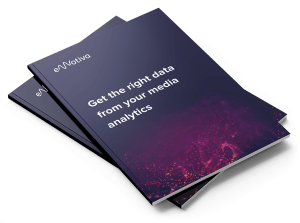Predictive click vs. Click-through rate
Summary
In recent years, along with digital marketing, many useful metrics have developed to evaluate the effectiveness of content. One of the most important is, for sure, the Click-through rate. That is one of the first insights you look at when you want to know right away what the result of the marketing campaign was.
Today we’re going to take the concept of CTR and compare it to a different metric based on the analysis of the attentional and emotional levels of the audience, predictive click.
Key Points
- A higher CTR percentage means better results for a marketing campaign.
- Content influences the outcome of a campaign by approximately 50%.
- Many companies are starting to use predictive analytics to improve the success rate of their marketing campaigns.
The click-through rate
In digital marketing, the click-through rate (or CTR for short) is a metric that measures the number of clicks an ad receives for a certain number of impressions. Its formula is (Total clicks on the ad) / (Total impressions) = Click-Through Rate.
Today, companies base the success of their marketing campaigns on this KPI, which not only gives a quick overview of the campaign’s progress but also makes it clear whether the content used was effective or not.
Hence the importance of the Click-through rate.
How do you achieve a reasonable Click-through rate?
CTR, as we said, is a crucial metric that gives us a general overview of how our content is performing. A higher percentage means better results from the marketing campaign.
How can we increase or be sure to have a reasonable click-through rate?
You need to consider vital aspects when launching a campaign and want to get good results like a high CTR rate.
Chief among these is the target audience. Targeting the right segment is not a given; the slightest variation can change the results of a campaign.
Next, once you have defined your target audience, you have to create good content, which influences the outcome of your marketing campaign by approximately 50%.
Let’s think about it. Content attracts people browsing the internet or social, so having good content will increase the chances of having a higher CTR.
That is possible when the content created has two prerequisites that, to date, are primary for the success of your marketing campaign, we speak of:
- Attention
- Emotions
Attention and emotion can increase audience engagement with your content and brand. Many companies are adopting these new metrics to measure the effectiveness of their ad content in the pre-test.
Predictive Analytics: What is Predictive Click?
Attention and emotions combined with Artificial Intelligence can help the company to achieve its goals by analyzing, in advance, the content for its marketing campaign. How?
That is all done through predictive analytics, using data and algorithms to identify the probability of future results based on the analysis of the content you want to promote. More specifically, what you’re going to calculate are predictive clicks.
In our case, the predictive click determines, with a probability rating, whether or not the content will interact once published on social channels. The predictive click considers the user’s attentional and emotional parameters in the first 5 seconds they look at the range.
How can it be used?
Predictive click is data obtained in a pre-test analysis of the content. Therefore, the company will be able to understand right from the start if what has been analyzed will bring results, if it will be better to change the type of content or, simply, improve it.
Predictive click vs. click-through rate
Predictive click and click-through rate are two very different metrics, but neither excludes the other in analysis.
The main difference between these two rates is when we calculate them. The predictive click is a metric obtained in the pre-test phase, so even before the content is published, while the CTR is a rate calculated when the marketing campaign is already online or when it ends.
These two metrics can coexist. A reasonable probability marked by the predictive click indicates that the content can generate attention and emotions in the chosen target. Consequently, the click-through rate could have a higher conversion rate.
Follow the predictive click.
We can fully observe the effectiveness of predictive clicking on the case study of the company NeN. They used predictive analytics to produce branded video content for their clients, so they were much more likely to succeed once they launched campaigns on social channels.
However, predictive click is not the only metric we get when predictive analytics on the content you want to promote. Other equally important KPIs help you improve your marketing campaign and get better results. We have a more specific paper that will help you understand the importance of the other metrics of predictive analytics based on attention and emotion.
DOWNLOAD YOUR WHITE PAPER FOR FREE






